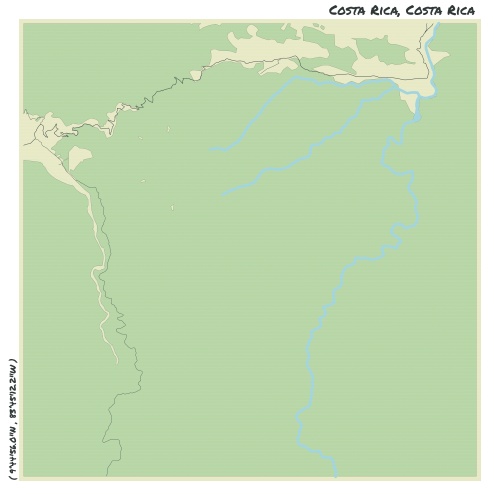Understand
Costa Rica, officially known as the Republic of Costa Rica, is a nature lover's paradise. It is known for its extensive system of national parks and protected areas, covering a remarkable 23.4% of the country's land area, the largest percentage in the world. This small country is home to an astonishing 5% of the world's biodiversity. Visitors can enjoy the stunning beaches of the Pacific Ocean and Caribbean Sea, as well as visit several active volcanoes. Costa Rica is renowned for its commitment to ecotourism and is consistently ranked as one of the best ethical destinations in the developing world. It is a politically stable and peaceful nation that abolished its army in the 1940s. The country also excels in terms of environmental performance and has been ranked as the happiest and greenest nation in the world. However, it's worth noting that Costa Rica is considered one of the most expensive countries in Central America.
Get in
Entering Costa Rica is a breeze for most visitors, as no visa is required for stays up to 90 days. If you hold a valid US, Canada, Japan, South Korea, or Schengen visa, you can enter without a prior visa, provided that it is valid for at least 3 months and stamped in your passport. Remember to have proof of onward travel out of Costa Rica upon arrival, especially if you are entering overland. It is also important to note that a valid yellow fever certificate is required if arriving from certain neighbouring countries. Ensure you have this certificate to avoid any inconvenience or restrictions on your journey. If you are missing the certificate, friendly police officers may assist you in obtaining it for a fee. Remember that the vaccination should be administered at least 10 days prior to your flight. Another lesser-known way to reach Costa Rica is by driving along the Pan-American highway, which stretches from Alaska to Southern Panama and traverses Costa Rica. If you choose this adventure, be prepared for a lengthy border crossing process at Peas Blancas when crossing from Nicaragua. The procedure involves scanning luggage, separate scans for the car and driver, passport control, and filling out various forms. Note that your car insurance must be explicitly written in Spanish and state that it is valid for Costa Rica. If not, you will be required to purchase a new one upon entry. As of November 2012, it is necessary to present a return ticket from Costa Rica at the border. Make sure your ticket is specifically "from Costa Rica" and not from other neighboring countries. Keep in mind that occasionally, immigration officials may check identification cards and passports on buses traveling near the border. To avoid carrying your actual passport, it is advisable to have a copy of your passport and the stamp indicating your entry date to validate your stay of less than 3 months in the country.
Map & Climate
Popular Foods
 Gallo Pinto - Gallo Pinto is the national dish of Costa Rica, consisting of black beans and rice mixed together and seasoned with herbs like cilantro, garlic, and onions. It's typically served for breakfast but can be found throughout the day, often accompanied by fried plantains, sour cream, and red peppers. This hearty dish is both filling and flavorful.
Gallo Pinto - Gallo Pinto is the national dish of Costa Rica, consisting of black beans and rice mixed together and seasoned with herbs like cilantro, garlic, and onions. It's typically served for breakfast but can be found throughout the day, often accompanied by fried plantains, sour cream, and red peppers. This hearty dish is both filling and flavorful. Casado - Casado is a traditional Costa Rican meal that usually includes a protein (like chicken, beef, or fish), rice, beans, salad, and plantain slices. This plate is meant to offer a complete meal with all the necessary nutrients and is popular for lunch or dinner. Variations may include different proteins or regional ingredients.
Casado - Casado is a traditional Costa Rican meal that usually includes a protein (like chicken, beef, or fish), rice, beans, salad, and plantain slices. This plate is meant to offer a complete meal with all the necessary nutrients and is popular for lunch or dinner. Variations may include different proteins or regional ingredients. Tostones - Tostones, also known as patacones, are twice-fried green plantain slices that are a popular snack or side dish in Costa Rica. They have a crispy exterior and soft, starchy interior, and are often served alongside meals or as a standalone treat. While they can be plain, they're commonly enjoyed with a dollop of sour cream and a sprinkle of salt.
Tostones - Tostones, also known as patacones, are twice-fried green plantain slices that are a popular snack or side dish in Costa Rica. They have a crispy exterior and soft, starchy interior, and are often served alongside meals or as a standalone treat. While they can be plain, they're commonly enjoyed with a dollop of sour cream and a sprinkle of salt.




Comments
NO COMMENTS